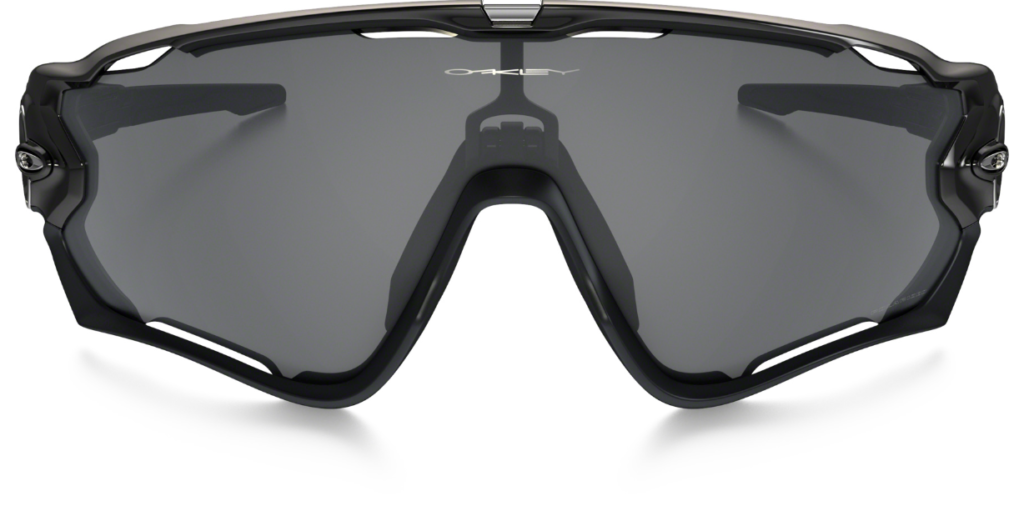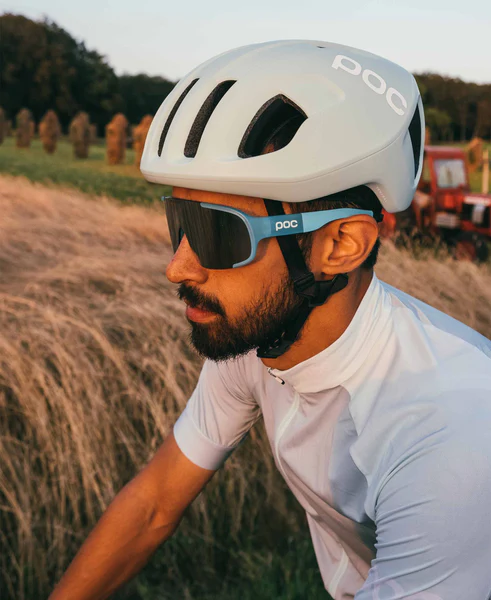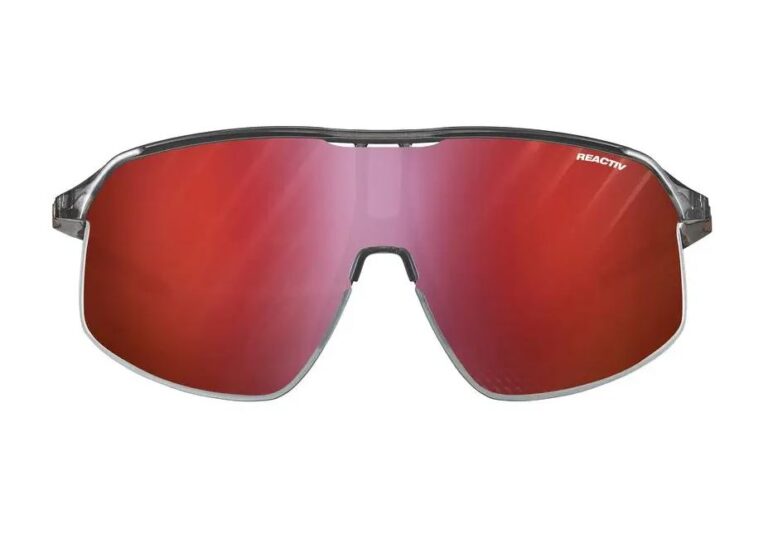An Overview: Polarized vs Non-Polarized Bike Glasses

Key Point Summary of Polarized vs Non-Polarized Bike Glasses:
- Polarized Glasses: These are designed to reduce glare from surfaces like water, roads, and cars, making them ideal for bright conditions and water-adjacent routes.
- Non-Polarized Glasses: They provide basic UV protection and are generally more affordable, but they lack the glare reduction feature, making them less suitable for highly reflective environments.
- Visibility and Clarity: Polarized glasses improve visibility and clarity by filtering out horizontal light waves, whereas non-polarized glasses might not cut the glare, affecting visual comfort.
- Cost and Use Cases: Polarized glasses tend to be more expensive but are beneficial for cyclists who frequently ride in bright, sunny conditions. Non-polarized glasses are a budget-friendly option for overcast days or low-glare environments.
- Personal Preference and Experience: The choice between polarized and non-polarized glasses can also come down to personal preference and specific cycling conditions.
As a masters cyclist who has spent countless hours racing and riding across various terrains—from the rugged trails of mountain biking to the compact gravel of cyclocross races—I’ve had my fair share of experiences with different types of cycling glasses. Through sun, rain, and everything in between, the clarity of my vision has always been paramount.
In this article, I’ll dive into the world of polarized versus non-polarized bike glasses, drawing from my own adventures to shed light on their benefits and differences. Whether you’re just starting out or looking to level up your mid-ride visuals, let’s break down what you need to know in a casual yet informative tone.
The Essence of Cycling Glasses
In my years of cycling, I’ve come to realize that not all bike glasses are created equal. The main divide? Whether they’re polarized or not. This isn’t just a matter of fancy terminology; it translates to how well you can see the trail or road ahead, how your eyes feel after hours in the saddle, and, frankly, how much you enjoy your ride.

Polarized Glasses: A Game-Changer for Glare
Polarized glasses have been a game-changer for me, especially on routes where water bodies shimmer under the sun or on long stretches of asphalt that reflect light like a mirror. I remember a particular race, a grueling century ride under the scorching sun, where my polarized lenses cut through the glare and allowed me to spot obstacles and changes in the terrain far ahead of my competitors. The lenses work by filtering out horizontal light waves—the ones that create glare—enhancing depth perception and reducing eye strain.
Non-Polarized Glasses: The Everyday Option
On the flip side, non-polarized glasses have been my go-to for overcast days or when I’m weaving through the shaded trails of a mountain bike park. Without the harsh glare to contend with, these glasses provide sufficient protection and comfort, not to mention they’re easier on the wallet. However, I’ve had moments when I wished for the clarity polarized lenses offer, like when an unexpected patch of sunlight breaks through the canopy, momentarily blinding me with glare off a wet rock.
Visibility and Clarity: Beyond the Glare
The difference in visibility and clarity between polarized and non-polarized glasses can’t be overstated. Riding through a technical gravel section, polarized lenses have often given me the edge, allowing me to read the terrain accurately and make split-second decisions. Non-polarized glasses, while adequate, sometimes leave me squinting against the reflected light, second-guessing my line choice.

Cost and Use Cases: Balancing Benefits with Budget
Admittedly, polarized glasses come with a steeper price tag, but for riders who frequently find themselves battling glare, they’re worth every penny. I’ve learned to balance my selection based on my riding plans—opting for polarized on bright days or specific race conditions, and sticking with non-polarized for casual rides or when conditions are less intense.
Personal Preference and Experience: The Ultimate Guide
Choosing between polarized and non-polarized bike glasses often boils down to personal preference and the specific demands of your cycling adventures. I’ve built up a collection over the years, switching between them based on weather, terrain, and the type of riding I’m doing. There’s something to be said for experiencing both types yourself, as the right choice can vary widely depending on individual sensitivity to light, typical riding environments, and, of course, budget considerations.
The Bottom Line
As you embark on your cycling journey, remember that the right pair of glasses can make a significant difference in your riding experience. Whether you opt for the glare-cutting prowess of polarized lenses or the versatile simplicity of non-polarized ones, the best choice is the one that meets your needs and enhances your love for the ride. And as you clock more miles and gather your own stories, you’ll find that, just like the bikes and trails we choose, bike glasses are yet another way we tailor our cycling adventures to fit our unique style and preferences.

While I can’t point to a single best model due to the diversity of needs and preferences among cyclists, I can suggest a few models from reputable brands that are well-regarded in the cycling community for their quality, features, and performance. These suggestions are designed to cater to a range of cycling disciplines and conditions:
For Road Cycling and Bright Conditions:
- Oakley Jawbreaker Prizm Road: Oakley’s Prizm Road lenses are engineered to enhance the visibility of the road so you can see obstacles more clearly and react faster. The Jawbreaker frame offers an extended field of vision and is optimized for cycling.
For Mountain Biking:
- Smith Attack MTB ChromaPop: Smith’s ChromaPop lens technology enhances contrast and natural color to make the details on the trail pop, improving your ability to read the terrain. The Attack MTB model offers a frameless design for a wide field of view and easy lens interchangeability.
For Versatility and Changing Conditions:
- 100% S3 with Photochromic Lens: These glasses feature photochromic lenses that adjust their tint based on light conditions, making them suitable for everything from bright sunlight to overcast weather. The S3 model combines a timeless look with modern performance features.
For Budget-Friendly Options:
- Tifosi Crit with Interchangeable Lenses: Tifosi offers high-quality, affordable glasses with interchangeable lenses for different lighting conditions. The Crit model is popular among cyclists for its durability, comfort, and good coverage.
For Gravel and Adventure Riding:
- Rudy Project Defender: These glasses offer a wide field of vision, adjustable nosepieces and temples for a custom fit, and vented lenses to prevent fogging. They’re built to handle the rigors of off-road riding and provide excellent protection from the elements.
Key Features to Look For:
- Lens Quality: Look for lenses that offer UV protection and are shatterproof. Polarized lenses or those with specific contrast-enhancing tints can improve visual clarity.
- Fit and Comfort: Adjustable features, such as nose pads and temple arms, can help ensure a secure and comfortable fit.
- Frame Durability: Materials like Grilamid TR90 are known for their durability and flexibility.
- Ventilation: Features that prevent fogging are crucial for maintaining clear vision during intense efforts or in varying temperatures.
The best way to find the right model for you is to try on several different pairs to see which ones fit best and meet your needs for visibility, comfort, and style. It’s also worth checking out reviews and forums where cyclists share their experiences with different models.
Ride on!
John

FAQ
Is polarized or non polarized better for cycling?
For general cycling, polarized lenses are often considered better because they reduce glare from reflective surfaces, which can improve visibility and eye comfort, especially in bright conditions.
Is polarized better than non polarized?
Polarized lenses are indeed better than non-polarized for conditions where glare is a concern, offering clearer vision and reducing eye strain.
Are polarized lenses good for mountain biking?
For mountain biking, polarized lenses can be good, especially in bright, sunny environments where glare off of surfaces can be an issue. However, in very low light or heavily shaded trails, some riders prefer non-polarized lenses for more consistent light perception.






